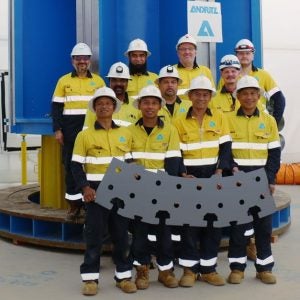Senators Lisa Murkowski and Dan Sullivan, both representing Alaska under the Republican banner, have introduced legislation with the aim of fortifying existing hydroelectric facilities to continue providing clean, flexible, and cost-effective electricity to Alaskan consumers. The senators were also among the original co-sponsors of the "Maintaining and Enhancing Hydroelectricity and River Restoration Act of 2023," which has garnered support from a diverse coalition of industry, environmental, and clean energy organizations.
In light of the growing impact of energy costs on consumers and businesses, hydropower has assumed heightened importance within Alaska's energy portfolio. The state has witnessed small hydropower projects pioneering innovative technologies, offering clean and affordable baseload power.
Senator Lisa Murkowski, a key proponent of the legislation, emphasized its significance, , saying: " This legislation, which I’m leading with Senator Cantwell, incentivizes hydropower development and taps into the immense renewable resources available in Alaska. With this bill, we’re spurring hydropower development in Alaska, diversifying our energy supply, reducing our emissions, and investing in Alaska’s future.”
Senator Dan Sullivan also underscored the importance of hydropower, revealing that nearly 30% of Alaska's electrical energy is currently supplied by hydropower, with even more potential waiting to be harnessed. Sullivan has long championed the expansion of hydropower as a vital component of an all-encompassing energy strategy necessary for the country. The bill includes provisions for tax credits for transmission lines, which are expected to facilitate the expansion of clean hydroelectricity in Alaska, leading to lower energy costs and heightened economic opportunities for Alaskans.
The proposed legislation introduces a novel 30% federal tax incentive, accessible to not-for-profit entities as well, to encourage enhancements in the safety and security of existing dams. These investments will also extend to improving fish passage infrastructure, water quality, and recreational opportunities at hydropower project sites. Furthermore, the bill pioneers a federal cost-sharing initiative aimed at incentivizing the removal of outdated river obstructions that adversely affect river ecosystems and hinder outdoor recreation.
A diverse range of local and national power organizations, alongside bipartisan policy entities, have lent their support to the bill, underscoring its far-reaching significance.
Curtis Thayer, Executive Director of the Alaska Energy Authority, expressed his organization's enthusiasm for the bill's reintroduction, describing it as a long-overdue piece of bipartisan legislation: “This bi-partisan legislation is long overdue and AEA looks forward to working with Senator Murkowski and Sullivan in advancing the bill that helps solves the needs of today and looking towards the needs of the future.”
Joel Groves, President of the Alaska Independent Power Producers Association, also expressed appreciation for the Alaska delegation's efforts in supporting hydropower. He expressed strong support for Senators Murkowski and Sullivan's leadership in reintroducing the bill, positioning the nation and the state for a more energy-secure future centered on hydropower.
Duff Mitchell, Managing Director of Juneau Hydropower, hailed the reintroduction of the bill as long overdue, emphasizing the extensive benefits it promises for the nation's energy agenda and environmental responsibility. The legislation's sponsors, Senator Murkowski, Senator Sullivan, and others, were commended for their leadership in energy and infrastructure.
Robert Siedman, CEO of Southeast Alaska Power Agency, voiced his full support for the legislation, noting that it paves the way for clean, green renewable energy and underscores hydropower's essential role in the nation's energy portfolio.
Jeremy Bynum, Division Manager of Ketchikan Public Utilities, welcomed the reintroduction of the legislation as crucial for incorporating clean hydropower into the nation's energy blueprint and enhancing energy security and river restoration.
The current federal Investment Tax Credit (ITC) for hydropower only covers investments that result in a marginal increase in power generation. Vital environmental and maintenance investments, such as enhancing fish passage and ensuring the safety of dams, that do not lead to power generation increases are ineligible for this credit. With many aging hydroelectric dams in need of costly upgrades to continue operating safely and economically, the "Maintaining and Enhancing Hydroelectricity and River Restoration Act of 2023" aims to address this gap in existing legislation.
Eligible investments under the bill encompass projects like installing fish-friendly turbines, creating new fish ladders, managing river sediments to improve habitat, upgrading or replacing floodgates and spillways, and expanding access to public waterways impacted by existing dams.
The bipartisan legislation also supports local efforts to eliminate non-power-producing river barriers, including outdated dams, dikes, or embankments. Private, state, local, and non-profit groups can utilize the 30% federal tax incentive, with a direct pay option, to support the removal of unnecessary barriers with the owner's consent. This removal can provide new outdoor recreation opportunities, create fish and wildlife habitats, stimulate local economic development, and enhance river resilience in the face of climate change.
Other sponsors of the bill include Senators Maria Cantwell, Debbie Stabenow, Angus King, Thom Tillis, Kirsten Gillibrand, and Jeanne Shaheen.






